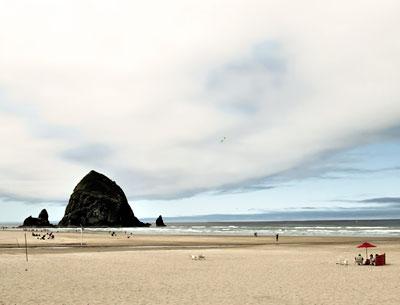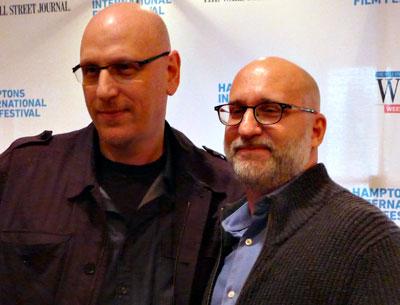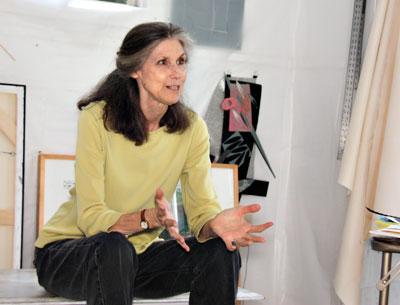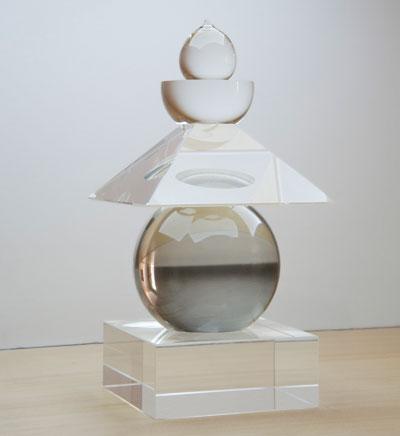Festival Announces Awards Winners
Festival Announces Awards Winners
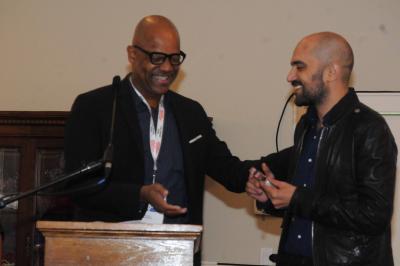
The Hamptons International Film Festival announced the winners of its jury and special prizes on Monday. The Golden Starfish Narrative Feature award went to “Gett: The Trial of Viviane Amsalem,” written and directed by Ronit Elkabetz and Shlomi Elkabetz. The Israeli film focuses on the male-dominated and sometimes decades-long process required under rabbinical law to dissolve a marriage.
"The Special Need” won the Golden Starfish Award for Best Documentary. Directed by Carlo Zoratti, the film is the story of Enea, who is looking for love in Italy, a difficult task for one who suffers from autism, and his two best friends who set out with him an a journey through Europe.
The narrative jury also awarded a special jury prize for Outstanding Performance by an actress to Ronit Elkabetz in “Gett” and an award for Most Promising Performance by a Newcomer to Jacob Lofland for his role in “Little Accidents.” David Formentin’s short film, “Tznuit” was acknowledged for raising awareness of a socially relevant issue.
Tamara Erde was awarded a special prize by the documentary jury for her achievement in visionary filmmaking for “This Is My Land.” Pavol Pekarcik, Ivan Ostrochovsky, and Peter Kerekes received a special mention for artistic merit for their film, “Velvet Terrorists.” “Once Upon a Tree” earned an award for artistic merit for its director, Marleen van de Werf.
The Tangerine Entertainment Juice Award, which honors an outstanding female narrative director, was given to Sara Colangelo, director of “Little Accidents.”
“Virunga,” directed by Orlando Von Einsiedel, won both the Victor Rabinowitz and Joanne Grant Award for social justice and the Zelda Penzel Giving Voice to the Voiceless Award.
The Wouter Barendrecht Pioneering Vision Award, which recognizes an emerging filmmaker who is a creative risk-taker and is fearlessly dedicated to the craft, was presented to Peter Strickland, director of “The Duke of Burgundy.”
“Gabriel,” directed by Lou Howe, won the Suffolk County Next Exposure Award, given to a film at least half of which was shot in Suffolk County.
Variety, now it its third year of partnership with the festival, announced its annual 10 Actors to Watch. The rising stars are Kaitlyn Dever, Eve Hewson, Dakota Johnson, Lola Kirke, Zoe Kravitz, Caleb Landry Jones, Jack O'Connell, Tye Sheridan, Jenny Slate, and Miles Teller.
Two awards announced prior to the festival are the 2014 Alfred P. Sloan Feature Film Prize, which went to “The Imitation Game,” directed by Morten Tyldum, and the 2014 Brizzolara Family Foundation Award for a Film of Conflict and Resolution, presented to the directors Ross Kauffman and Katy Chevigny for “E-Team.”
Finally, Joel Schumacher was presented with the Golden Starfish Lifetime Achievement Award in Directing, and Hilary Swank received Variety’s Creative Impact in Acting Award.
This year’s narrative jury was comprised of Patrick Harrison of the Academy of Motion Picture Arts and Sciences, Ingrid Sischy, contributing editor of Vanity Fair, and the photographer Bruce Weber. The documentary feature jury included Lilly Hartley, founder of Candescent Films, Stephen Whitty, current chair of the New York Film Critics Circle, and David Rattray, editor of The East Hampton Star.
For coverage from the film festival, click over to The Daily Grind.

